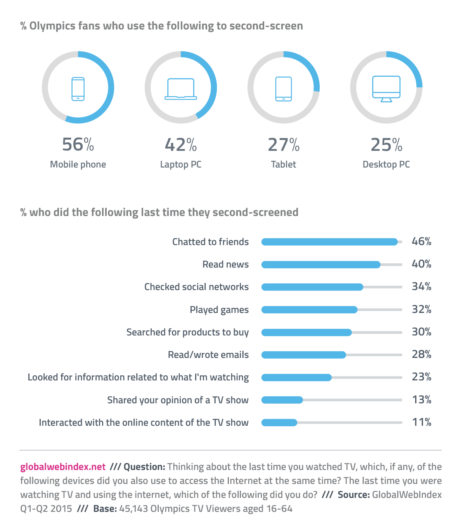Olympic PPC Ad Strategies

We’re a little over a week away from the opening ceremonies and the 2016 Olympic games are trending to exceed past benchmarks, most notably in media coverage and ad sales. For those of us watching how this event will unfold on the digital stage, the Rio games have the ability to change some old school rules.
In past years, paired with a much smaller set of ad channels, only large brands with deep pockets to maximize on the incredible event hype could participate. Since the London 2012 Olympics, social media platforms have exploded and mobile technology has taken center stage prompting the Olympic committee, broadcast stations, and spectators to evolve with the times.
Changes To The Olympic Marketers Playbook

The most notable change was put into play last year when the International Olympic Committee (IOC) decided to loosen restrictions
outlined in Rule 40. In previous games, athletes and brands who sponsor athletes, outside of those “official” Olympic sponsors, were restricted to a blackout period. Changes to the rule will allow non-Olympic advertising and self-promotion.
In the online world we will see a saturated digital landscape with both small and large brands promoting athlete and general Olympic support. John Grady, a sports law professor at the University of South Carolina, discussed the ramifications in a New York Times article by saying, “…as the space gets cluttered with more and more brands, consumers are less able to identify who is who.”
Big Brand Social Partnerships
According to Business Insider, NBC has invested $100 million dollars into their Olympic marketing campaigns, which is 33% more than previous years. Included in their portfolio is a partnership with Buzzfeed to assist with daily content and Snapchat for live video feeds. Among traditional channels, a larger emphasis is going to be placed on leveraging social networks including:
- Periscope
- Meerkat
This will bring many of the smaller niche platforms into a global light. People with little prior knowledge of Snapchat or Periscope may find their way to these engines. More widely used social platforms have also been strategic in taking advantage of this large stage. A good example is Twitter, offering event targeting, which allows advertisers to target individual sports or the Olympics as an event.
Multiscreen Consumer
Whether watching events on a mobile device or engaging in social chatter, the rise in multiscreen trends will be evident in the 2016 Olympic games. Global Web Index, a digital consumer insight company, performed a wave of research and reported 85% of individuals who intend to watch the 2016 Rio games on TV plan to use a second device for either social purposes or news consumption. 1/5 of those participating in the research plan to watch the games on their mobile device, which feeds the expansion of where and how people are able to tune into Olympic events. This all further builds out platforms for non-official advertisers to reach an audience.
Final Thoughts
Updated rules paired with market expansion and an emphasis on the multiscreen consumer leads us to forecast a larger spotlight on the digital landscape than previous games. Advertiser eyes will be on how unofficial big brands, such as Under Armor, as well as the smaller guys take advantage of the games, as well as if any groundbreaking tactics will be unveiled in the social and mobile space.



